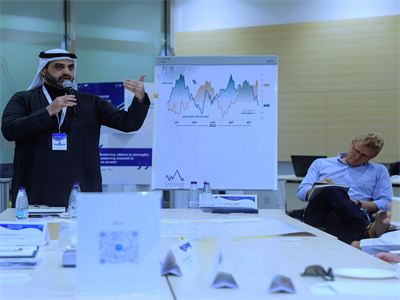Program Brief
As the world changes rapidly and constantly, organizations realize that they cannot rely on managers to have all the answers and that command and control management is no longer effective. Due to the new reality, organizations are moving away from traditional control practices toward something entirely different: a model where managers provide support and direction rather than command, and employees learn to adapt to ever-changing environments through innovation and a culture of change. In short, the role of the manager became that of a coach and a mentor. In this training program, participants will learn about the concepts, types and importance of coaching, in addition to familiarizing themselves with its tools, techniques and methods of application, as well as how to improve and develop coaching skills for managers and make the most of it in directing employee performance towards achieving goals.
Sectors
Program Topic
- Business Leadership and People Management
Job Families
Program Goals
At the end of the training program, the participant should be able to:
- the basic concepts and rules of coaching operations so that he can motivate employees and direct them towards the desired goals of the organization.
- Acquire effective communication, listening and dialogue skills to influence and support employees to achieve accomplishments and goals
- Implementation of the coaching phases and familiarity with the methods of managing sessions to ensure that the results are monitored and the final evaluation of employees is properly obtained.
- use of coaching tools and appropriate assessment tests to understand the different styles and personalities of employees and the use of the optimal approach to each style.
Jadarat
Program Agenda
Module 1: Introduction to Management and Coaching
1 Management concept
2 Nature of management
3 Management functions
4 The concept of guidance for managers
5 The concept of coaching
6 The importance of coaching for managers
7 Coaching Triangle
8 Types of coaching
Module 2: Basic Rules and Principles of Coaching Operations
1 ?When do we need coaching sessions for managers
2 The basic rules of coaching
3 The basic principles of coaching
4 Coaching as an on-the-job guidance process
5 Workers' rights during coaching sessions
Module 3: The Basic Skills of a Coach Manager
1 The concept and stages of active listening
2 Methods of asking open and closed questions
3 Effective dialogue strategies
4 How to manage change processes for employees?
5 Positive motivation methods in coaching sessions
Module 4: Prepare the Manager as a Coach
1 Technical competencies of the manager as a coach
2 Coach Manager Ethics
3 The charismatic elements of the manager as a coach
4 Important tips for the manager as a coach
5 and presentation methods for the coach manager
Module 5: Stages of the Coaching Process and Management of a Professional Coaching Session
1 The concept of coaching session for managers
2 Ways to manage a coaching session
3 Administrative models for managing coaching sessions
4 Dealing with feedback on coaching processes
5 The stages of coaching
Intimacy and harmony
Setting goals
Make a plan
Monitoring results
Final evaluation and feedback
Module 6: Coaching Tools and Tests Used
1 The GROW model
2 The circle of life
3 SWOT Analysis
4 DCI Model
5 Johari window model
6 Representational styles
7 Applying the Hermann scale to explore the thinking style
Program Requirements
Not Available
Program Path
Names of the training programs that are integrated (enriched) with the training program:
Names of the training programs that after the training program:
Program Method
- Lecture
- Case Studies
- Brainstroming
- Dialogue Teams
- Role-play
- Exercises and assignments
Evaluation Method
- Pre Exam
- Post Exam
Training Type
- In Class Training
- Online Training















Add Comment